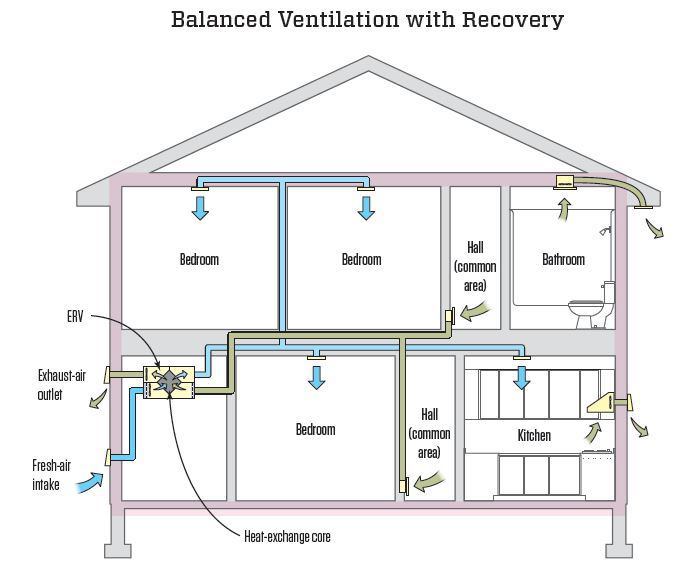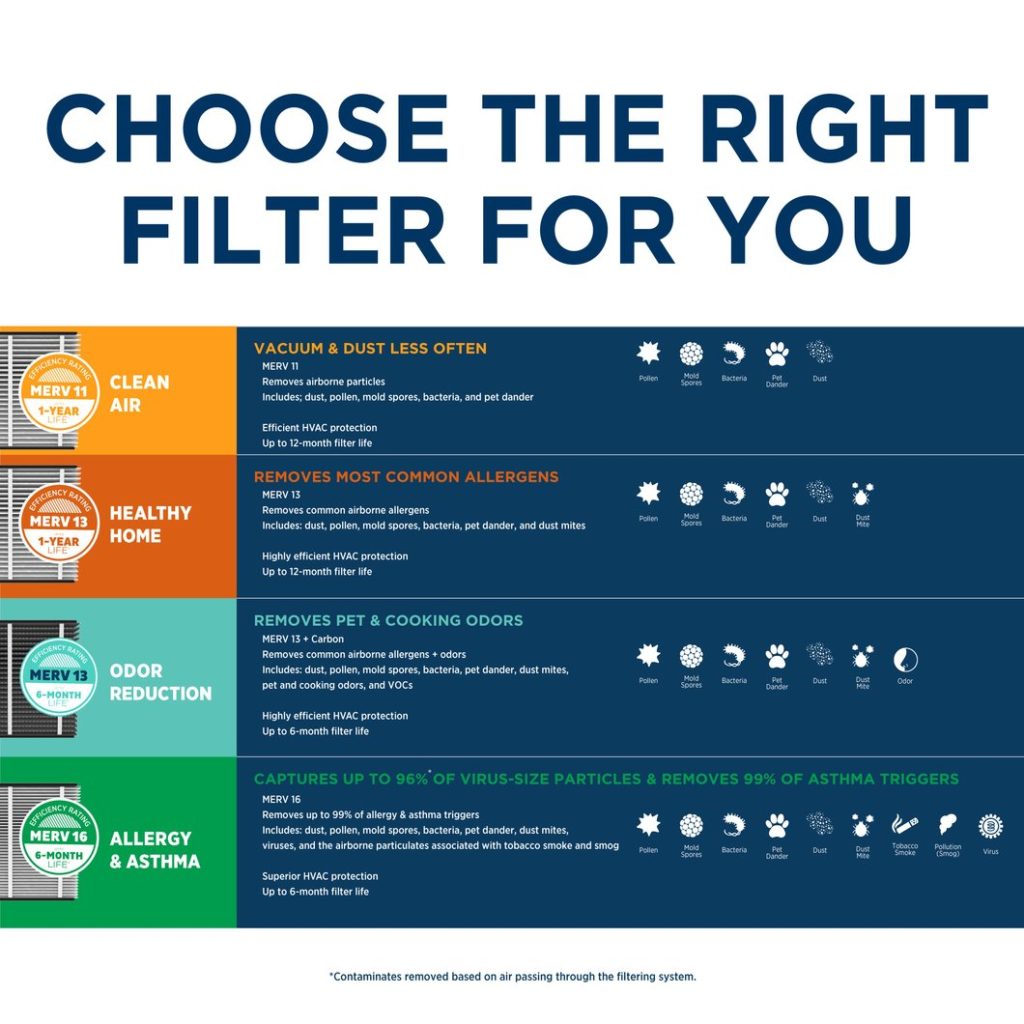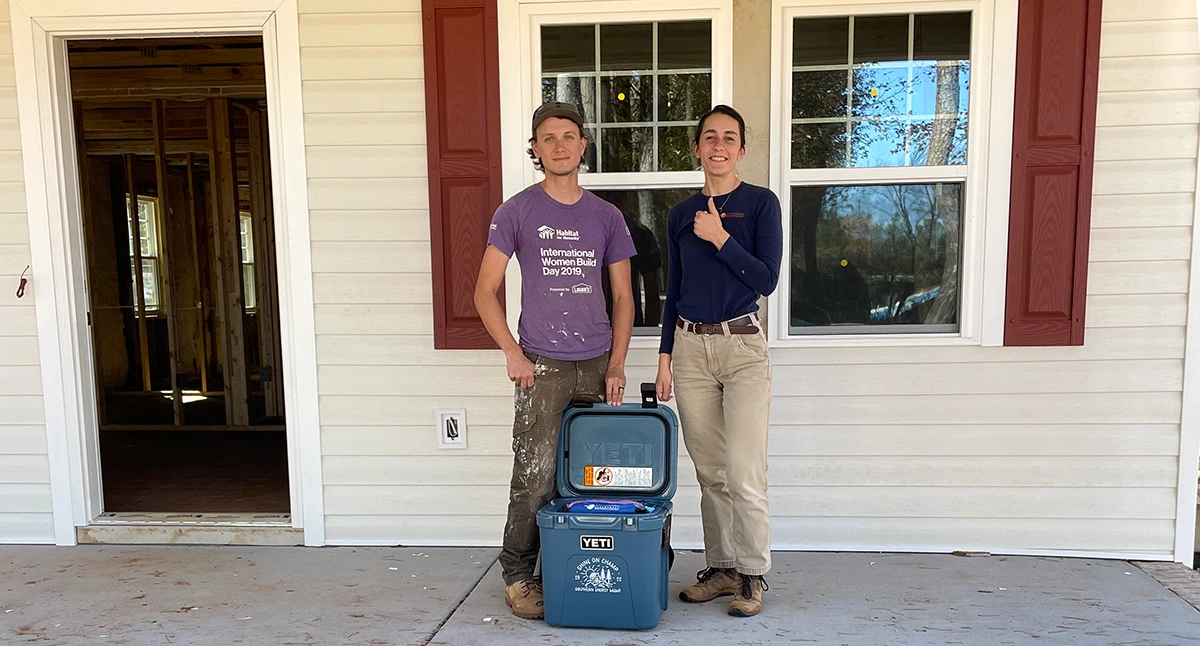- Jamie Hager
- October 21, 2020
- 7 Minute Read
I do love October! The cool nights, leaves changing, and Halloween decorations are something to look forward to after a summer of heat and humidity, but this time of year also has a spooky side — allergies, flu, pandemic…oh my! Health is especially top of mind this October, and with winter coming, we will be spending more and more time indoors. Many builders think indoor air quality is up to occupant behavior, but that is a trick! Follow these 3 guidelines to ensure bad indoor air quality doesn’t haunt your homes’ performance.
1. Keep Out the Bad Stuff: Eliminate Pollutants
Work smarter, not harder, as my neighbor Ollie is often telling me. Selecting building materials that are formaldehyde free, have low or zero VOCs (volatile organic compounds), or feature an indoor air quality certification or label means you do not have to deal with these contaminants in the first place. Focus on composite wood products (trim, OSB, cabinets), low VOC paints & finishes, low VOC carpet and carpet adhesive, and formaldehyde free insulation for low-cost strategies with a big impact on occupant health. All the major building material suppliers offer options — Here’s a helpful guide on how to find low emission products.
In addition to material selection, designing in strategies to help occupants keep things clean is a healthy home bonus. First — seal that crawl! Even the tightest HVAC systems still leak a little bit, and a sealed crawl significantly reduces the dust, dirt, and creepy crawlies that would otherwise be sharing space with the home’s breathing system. Features that last the life of the home— such as mudrooms and detached garages — provide a drop zone for items best kept out of the living space, like muddy shoes and all those gardening supplies we acquired this spring. Finally, be sure any gas or fuel burning appliances — especially fireplaces — are sealed combustion and directly vented to the outside. There is no such thing as a “vent-free” fireplace, and even “clean burning” fuels produce a lot of water during combustion, creating an ideal environment for mold growth in the home.
2. Breathe the Good Stuff In: Provide Mechanical Ventilation
The unsung hero of indoor air quality, proper mechanical ventilation, has been heralded as a top strategy for reducing and diluting airborne contaminants — including exposure to the virus that causes COVID-19. Kind of like that stuffy feeling you get in an airplane on long flights, if the same air is being recycled over and over again with no “new” air introduced, you get a build up of contaminants as well as CO2 in homes, affecting comfort and occupant health.
Ventilation is particularly important in high-performance homes, where extreme care has been taken to build a tight building envelope to keep occupants dry and comfortable. A tight building envelope helps a home perform extremely well, but without a dedicated system to consistently exchange the air, contaminants and water vapor can build up and contribute to stuffy bedrooms, funky odors, and even mold growth. In this age of better built homes and laser focus on health, installing a climate appropriate ventilation system is crucial.
Choosing Your Strategy
Illustration from JLC and originally adapted from 6.1.8, Ventilation Guide by Armin Rudd, 2011, BSC Press. Tim Healey
Using Your Strategy Properly
Once you have committed to a ventilation strategy, be sure your buyers are educated on its operation. Bad habits or lack of homeowner education can contribute to an existing problem or create new ones. A few tips from our experience over the years:
Supply Only Strategies
Train occupants on thermostat controls, especially keeping the HVAC fan in the “auto” position so that the outside air is introduced at the appropriate, designed rate. If they switch the fan to “On”, they will over-ventilate, causing higher bills and potential humidity issues.
Exhaust Only Strategies
Choose low sones for all bath fans. Place the smart, auto-controlled fan that runs for fresh air in the guest or central bath instead of the master bath to avoid complaints of fans “running all of the time”.
Balanced Systems
Resist the urge to tie your ERV (Energy Recovery Ventilation System) to your heating and cooling duct system. Using the much more energy efficient ERV fan with it’s own dedicated ductwork ensures affordable and adequate distribution of fresh air throughout the home year round.
Supplemental Dehumidification
It’s humid here y’all. Depending on home design, controlling indoor humidity may not get done with air conditioning alone. Pairing your ventilation system with supplemental dehumidification can be a great solution.
The main takeaway? Understand your ventilation strategy and be sure your homebuyers are trained on how to use it.
3. Filter What's Left
Many people go to filtration first when they think of indoor air quality, but it is truly the final stake in the heart of horrible indoor air. So how do you know what kind of filter to choose?
A Pleated Media filter at the unit with a maintenance plan is my recommendation for high-performance homes for two reasons. The first is because we are human and let’s face it — people are terrible at changing their filters (present company included!). Even the best of us have been guilty of forgetting, procrastinating, or simply dreading the inconvenience.
Getting the Most from Your Filters
A dirty filter is a clog in the system slowing down air-flow, leading to comfort issues, and potentially damaging the HVAC equipment. The 1” filters commonly put in wall/ceiling returns should be changed every 2-3 months at a minimum, and even more frequently if you have kids and pets. In contrast, a pleated media filter at the unit only needs to be changed once or twice a year and can be scheduled with the annual maintenance of the HVAC system.
The second reason to go with a larger, pleated filter at the unit is to be able to get better filtration without compromising air flow — meaning you can filter out more of the really harmful, small particulates while still getting air to all the places it needs to go in the home. So, how much filtration is enough? Experts recommend installing a filter with at least a Minimum Efficiency Reporting Value of 13 (MERV 13)to catch 85% of the itty bitty stuff that does the damage to our lungs.
Catching the Small Stuff
If you want to catch even smaller particulates, such as viruses , you can upgrade to MERV 16 or a HEPA filter. The higher the MERV rating, the more you can filter out. While you can get a high MERV rated 1” filter for the returns in the home, it will restrict airflow and should not be installed unless your HVAC contractor has designed the system to overcome the increased air-flow resistance. If you really want to get the most from your filters, check out this article by our friends over at Energy Vanguard on common filter failures.
Added bonus — a pleated filter at the unit ALSO serves as the filter for supply only ventilation systems! Win-win! So go with the media filter at the unit and you can still use the cheap, non-MERV rated filters in the walls for dog hair and kid dirt to help extend its life.
Eliminate, Ventilate, Filtrate
In summary, the devil is in the details. Just remember the 3 magic words to managing those little demons of dirt and toxins — eliminate, ventilate, and filtrate — and you can confidently market the health of your homes.
If you have any questions about your ventilation strategy, reach out and let us know! Our building science team is happy to help you figure out which tricks are best to treat your customers to better indoor air quality, and a healthier home.

Ready to Get Started?
Schedule a meeting with us today to review your home performance goals and challenges.
About Us
North Carolina’s solar power and building performance expert. Founded in 2001, we’ve worked for 20+ years to improve the way people make and use energy.
















